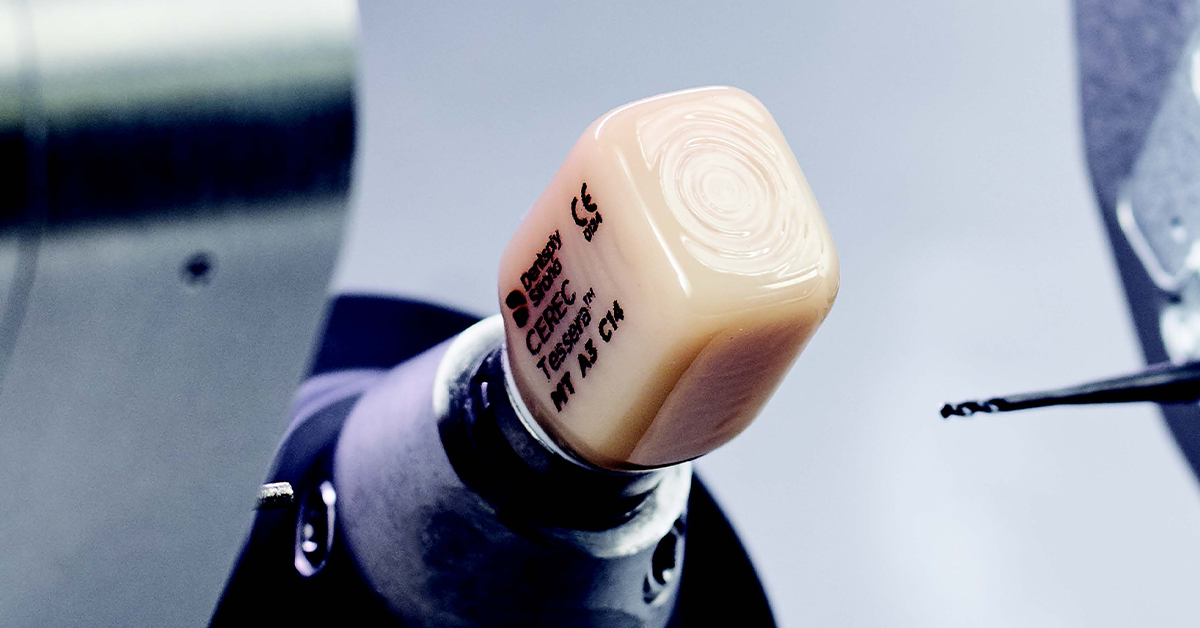This is a sponsored post by Dentsply Sirona.
When choosing a CEREC block to work with, given all the choices on the table, it’s important to carefully assess each characteristic of the material in relation to how those attributes will best serve you, your team, and of course, your patients.
Let’s start with assessing the material from a patient-centric perspective. Will it look good in the mouth? Will the restoration last for years to come? Will the material workflow get the patient out of the chair as fast as possible? Let’s take a look at the CEREC Tessera block, a newcomer to the CEREC material market, and the ways in which it addresses these questions:
Esthetics
CEREC Tessera glass ceramic blocks are a tooth-colored material right out of the box and are available in ten of the most common VITA shades to match a patient’s natural dentition. The material was purposefully formulated to provide a naturally dynamic light refraction, transmission and absorptive properties that mimic the visual vitality of natural teeth.
Longevity
Although a relative newcomer to the market, CEREC Tessera blocks boast a strength greater than 700 MPa, and have shown excellent results in both in-vitro testing and in actual patient cases. Due to their advanced lithium disilicate composition, when fired, CEREC Tessera blocks are further strengthened by the formation of new crystals called virgilite. The addition of virgilite creates a robustly reinforced, high-density restorative material that’s designed to last. Also, the material requires only a 1.00 mm reduction on the prep, conserving the patient’s natural tooth structure while maintaining its impressive >700 MPa strength.
Workflow
With a four-minute, 30-second firing time in the CEREC SpeedFire furnace, CEREC Tessera blocks help get patients out of the chair quickly. Speed has always been a CEREC strong point, and this material complements the workflow efficiency and productivity of the digital CEREC workflow.
It may be a new material, but it follows a simple—yet familiar—workflow, so there’s nothing new for you and your team to learn: simply mill, glaze, fire and seat.
Speaking of workflow, you’ll save a considerable amount of time; particularly during the firing step. A firing time of four minutes, 30 seconds helps to speed up the entire process, and with only a 1.00 mm reduction requirement, preparations are simpler, faster and less invasive, thereby conserving more of the patient’s healthy natural tooth structure. And when the restoration is ready to seat, there is the option to either cement conventionally, or use adhesive bonding.
With the strength you need (>700 MPa), along with a fast firing time, coupled with a simplified workflow and lifelike esthetics, CEREC Tessera blocks are everything a CEREC block should be. For more information about CEREC Tessera click here.
– – –






You must be logged in to post a comment.